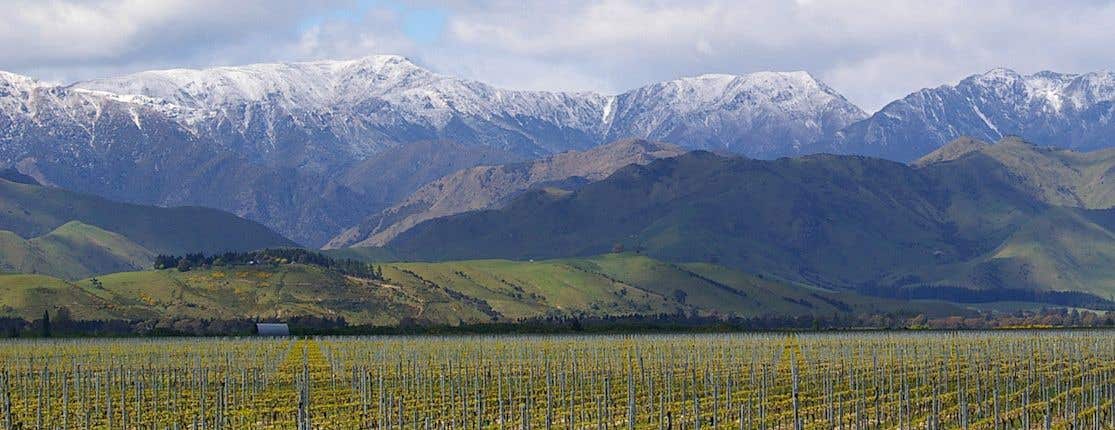New Zealand

The New Zealand wine industry, which produces a fraction of 1% of the world's wine, has a real problem. Like the country itself, it is so small and vulnerable that navigating a safe course across the treacherous waters of the international wine market can be extremely difficult. One strong economic wind and a pronounced list to starboard can threaten to capsize the craft altogether.
In 1986, fearing over-production, the government encouraged growers to pull out a quarter of the country's vines. Just seven years later (thanks to short vintages, and damage done by the phylloxera louse) there was such a desperate shortage of grapes that there simply wasn't enough wine to mount a serious export effort.
However, the results of fast and furious plantings in the mid 1990s helped to introduce more and more wine drinkers to the unique character of wines from these Pacific islands three hours' flying time south east of Australia. Demand has historically outstripped supply, keeping the average price of New Zealand wine high, but a bumper crop in 2008 saw producers and contract growers forced to deal with an unexpected surplus and fluctuating prices. Uneven harvests mean that production is still a roller-coaster ride for growers. New Zealand wines combine the well-preserved pure fruit flavours of New World winemaking with the natural grape acidity associated with northern Europe. This crispness, sometimes piercing and a characteristic of New Zealand reds as well as whites, is a feature markedly lacking in the great majority of New World wines, including most of those still made in Australia, which is why a number of Australian producers buy wine and even grapes from New Zealand (especially Sauvignon Blanc and ingredients for sparkling wine blends). In Europe vines tend to planted on poor soils, so yields are low and the grapes can ripen fairly well despite the high acidity, but New Zealand's soils can be very fertile so New Zealanders have had to devise ways of manipulating their vines, stripping leaves, and making every ray of sunshine contribute towards the ripening process. (New Zealand is the home of canopy management). New Zealand wine producers are allowed to make an unusually wide range of adjustments to the basic wine recipe: irrigation, chaptalisation, acidification and deacidification are all sanctioned in recognition of the country's extremely variable climate.
Wine drinkers outside New Zealand who have experienced New Zealand wines tend to regard the country's distinctively pungent, fruity way with the razor-sharp Sauvignon Blanc as the country's hallmark wine, but the dominance of this aromatic variety is a recent phenomenon – the first Sauvignon Blanc vines were planted in the 1970s. Whatever the vicissitudes of fashion, it is clear that New Zealand is likely to remain a predominantly white wine producer and the growing interest in other aromatic varieties such as Pinot Gris and Riesling is reflected in increased plantings. Crisp, fresh, occasionally over-oaked Chardonnay, for some time the second string to Sauvignon Blanc, has now been eclipsed by the country’s highly successful, impressively fruity Pinot Noirs. Intensely flavoured yet elegant wines have been produced in a variety of different regions, notably Martinborough on the North Island and Central Otago in the south of the South Island. Some particularly well-favoured vineyard sites, especially around Hawke’s Bay on the North Island, can yield concentrated Cabernet/Merlot blends but these varieties sometimes struggle to ripen, yielding wines with marked herbaceous flavours.
The country's three biggest wine regions by far are Marlborough, Hawke’s Bay and Gisborne, with the first way out ahead of the rest in terms of the volume of wine produced. There are still hundreds of farmers producing grapes, typically just one of several agricultural activities, for one of the country's big bottlers such as Brancott Estate (owned by drinks giant Pernod Ricard), Constellation NZ (Nobilo), Delegat’s/Oyster Bay, or the Villa Maria group (including Esk Valley and Vidal), which consistently produces more fine red wine than any other New Zealand operation.